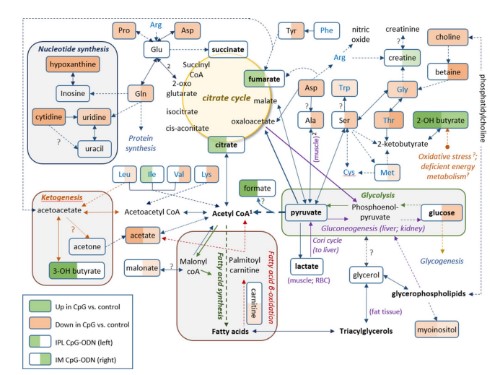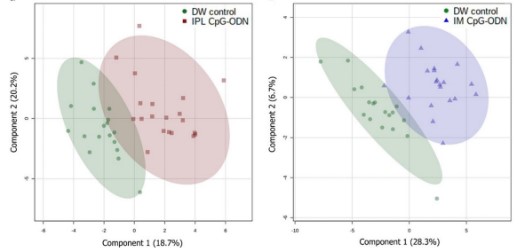What is metabolomics?
Metabolomics is defined as "the study of the set of metabolites present in an organism, cell or tissue." Metabolites are small molecules that have many functions: fuel, signalling, enzymatic effects, interactions with other organisms and defense. Our research is focusing on how metabolites interact with defense and disease.
Why study metabolomics?
The early detection of infections is critical in controlling disease outbreaks and reducing antimicrobial use. The Canadian chicken industry lacks the ability to detect pathogens within 1-2 days post-infection. Currently, the chicken industry mostly relies on the serological blood test to measure antibodies against pathogens to detect pathogenic infection. However, these tests can detect infections only 10-14 days after the pathogenic exposure. Nuclear magnetic resonance (NMR) spectroscopy and mass spectrometry (MS) is being applied in humans to identify metabolites (the end products of biological responses) in biofluids as biomarkers for disease and health. Additionally, looking at the immune cell profiles using flow cytometry, we we hope to identify pathogen-specific metabolites or metabolites beyond the normal range, changes in immune cell profiles, as well as detect infection and differentiate between viral and bacterial pathogens in chickens.

Metabolic pathway map.
(Goonewardene, 2021, Sci Reports, 11(1):9028)
Our research
We have found that after broiler chicks were given either intramuscular or intrapulmonary CpG-ODN, then challenged with E. coli. After intramuscular CpG-ODN, birds had significant and consistent decrease in amino acids, purines, betaine, choline, acetate, and a slight decrease in glucose. After intrapulmonary CpG-ODN, there was a similar decrease in purines and choline but less extensive decrease in amino acids, a stronger decrease in acetate, and a considerable increase in 2-hydroxybutyrate, 3-hydroxybutyrate, formic acid and a mild increase in TCA cycle intermediates. These findings suggest increased uptake of nutrients to the cells, to support cell proliferation triggered by an innate immune response (Goonewardene, 2021, Sci Reports, 11(1):9028).

PLS-DA Analysis
(Goonewardene, 2021, Sci Reports, 11(1):9028)
Currently, we are studying the metabolic changes after challenge with Clostridium perfringens, fowl adenovirus, avian reovirus and Enterococcus.

